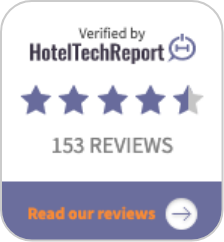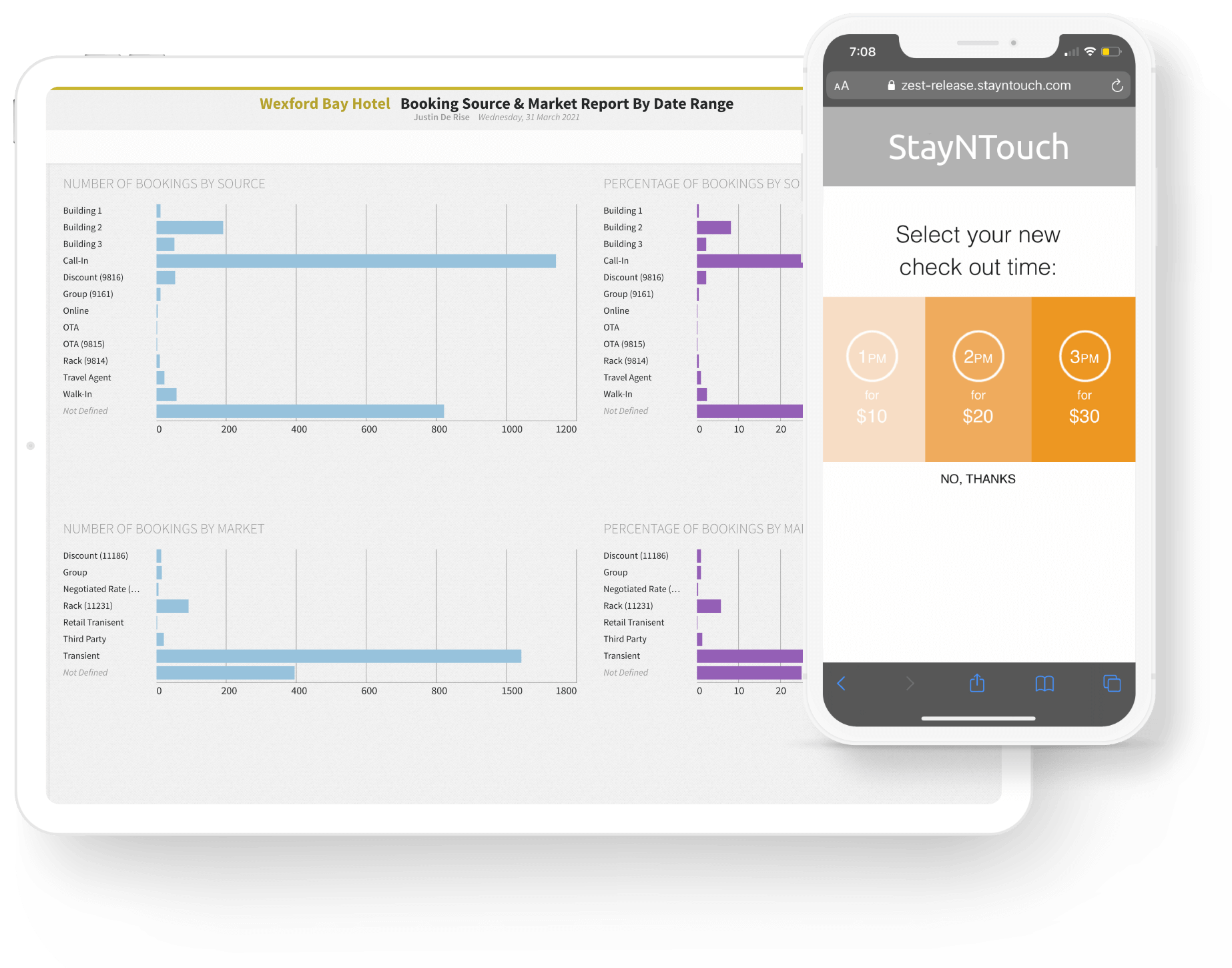COVID-19 and Hospitality: Smart Tips for Communicating During the Crisis
When COVID-19 began to spread rapidly in February and March 2020, it seemed to turn the world on its head. Seemingly overnight, a virus that was thought to be confined to the Wuhan Province in China, suddenly appeared throughout APAC, Europe and the United States. As the number of infected grew, social distancing “advisories” quickly became mandates, and large sections of the economy一including the travel and hospitality industries一ground to a virtual standstill.
For many people, myself included, this time of uncertainty created a whirlwind of questions: How can I avoid contracting the virus? How can I keep my family and loved ones safe? What will happen to my job, my investments, or my business? When will society ever return to normal…and what will that “new normal” look like?
Although we are classified as a “service” industry, many hoteliers are thrust into leadership roles during times of crisis. Our guests, employees, clients and investors have all been adversely affected by this pandemic, and they often turn to us for information, advice and assurances. As hoteliers, it’s incumbent on us to take Rudyard Kipling’s famous words to heart: We must keep our heads while all around us are losing theirs.
Communicate Early, with Honesty, Transparency, and Empathy
Effective and consistent communication is the first and perhaps most important part of leadership during a crisis. When a crisis hits, it’s critical to get your message out to your key constituencies early, and continue to communicate with them often. Maintaining trust and credibility is crucial, so your communications should be completely honest and as transparent as possible. And every message should be conveyed with an overwhelming sense of empathy for your audience’s concerns and anxieties.
This is much easier said than done. During a crisis, you will be forced to communicate with incomplete information, and deliver adverse news to customers, employees and investors. You may want to withhold or sugarcoat information out of a fear of “doing the wrong thing” or upsetting your stakeholders. Resist this urge entirely. It’s important to remain transparent and empathetic; to reveal as much information about the crisis and your response as you can, and quickly acknowledging and correcting mistakes, independent of their possible repercussions.
While this will inevitably lead to some difficult interactions in the short run, it will pay off immensely in terms of your credibility and relationships with your stakeholders. You will clearly demonstrate that you genuinely care about your stakeholders’ interests, that you can be trusted, and that you are proactively working to mitigate the fallout from the pandemic. Remember, all of your communications should be working towards explaining and overcoming the crisis一 not a short-term PR game to avoid difficult conversations.
Take Marriott CEO Arne Sorenson’s recent video outlining how COVID-19 has affected his business. Sorenson did not sugarcoat COVID-19’s effects: With revenues down 75% below normal levels, Sorenson highlighted the need to furlough two-thirds of Marriott’s workforce, and called the pandemic greater than 9/11 and the 2008 financial crisis combined.
But he conveyed the situation with a tone of genuine empathy and understanding, and offered concrete steps for how Mariott would proceed moving forward一including forgoing his own salary to prevent further layoffs. Sorenson’s authenticity strengthened the reputation and trustworthiness of his brand, and his speech has been heralded as a prime example of leadership during a time of crisis.
Steady Crisis Communication Requires a Tight Organizationational Structure
Establishing trust and authenticity during a crisis pandemic requires establishing a calm and coherent brand voice, while also maintaining productive dialogues with the various stakeholders in your business. Of course none of this can be achieved unless your company’s communications are channeled through a centralized organizational structure, with clear chains of command delineating who may speak to the press, and craft your brand’s tone and messaging. It’s also important to dedicate time each day to get your team up to speed on emerging developments and updates, both within your company, and with the pandemic at large.
Similarly, your online messaging should be centralized in a landing page dedicated to coronavirus updates, information, and mitigation efforts. This page could include information on potential exposures within your organization, contingency plans and preventative measures, your company statement regarding the pandemic, and links to external resources such as the CDC, or John Hopkins’ interactive coronavirus map.
Larger brands might want to form an entire COVID-19 task force, to assess your organization’s assets, needs and risks, and manage your brand’s communications strategy. The team should be relatively small, containing representatives from your brands main functions, including HR, legal, client relations, and communications/marketing.
The team should be able to do a SWOT (Strengths, Weaknesses, Opportunities, Threat) analysis for your brand’s coronavirus preparedness, which would take into account the various health, safety, personnel, legal and business impacts from the pandemic. The team should meet regularly to monitor the situation and give regular updates to your key stakeholders. Again, transparency is critical: Let people know the impact that a development has on your organization (whether good or bad), the amount of information that you already know, what new information you might need to acquire, and all relevant information sources.
Know Your Audience: Employees
Once you have your team in place and your organization’s relative strengths and weaknesses, it’s important to tailor your message to each of your main stakeholder groups. First among these must be your employees: Hoteliers are often on the “front lines” interacting with guests and implementing enhanced hygiene and social distancing measures. If they aren’t informed of your brand’s coronavirus messaging, response strategy, or protocols, outside communications will become more difficult and people could be put at risk.
Unfortunately, many hoteliers are also the first to face the possibility of pay cuts, furloughs or layoffs as a result of the economic impacts of the pandemic. They will undoubtedly be nervous about the status of their jobs, and will look to company leaders to clarify the situation and outline a plan for the future. It is absolutely vital that you communicate with your employees early and often, and are as upfront and transparent as possible一even if it means having difficult conversations or conveying bad news.
We’ve written about this in more depth elsewhere, but it’s important to stress that you should explore all creative cost-cutting measures一including executive and C-suite pay cuts一before resorting to layoffs in a time of crisis. And if you do need to engage in extensive furloughs, look into creative partnerships with hiring industries, to ensure that your employees have a source of income through the duration of the crisis.
Know Your Audience: Customers and Guests
Guests will also have concerns, whether it is about their health and safety visiting your properties, the status of an upcoming trip, or whether they can refund a visit cancelled by a state shelter-in-place order. Here, it’s important to respond with empathy, and to provide relief or compensation whenever possible. Remember, eventually this crisis will pass and guests will travel again, so consider offering credit for a future visit rather than a straight refund.
It’s also important to continue to market your brand throughout the duration of the crisis. With more time spent at home, people are turning to social media for entertainment and social connection. Now is the perfect time to maintain your brand’s visibility, and to inspire future visits when the pandemic finally lifts. It’s also an opportunity to experiment with creative messaging campaigns like humorously promoting social distancing in your ads, or creating digital mixed tapes to simulate a visit to your property.
In the Midst of a Crisis, Never Lose Your Head
COVID-19 has severely impacted public health, the global economy, and especially the travel and hospitality industries. Although it is a global crisis, it is something we can all overcome with the right kind of innovation, organization and leadership. And good leadership starts with good communication: ensuring your brand’s message is consistent, empathetic, and above all honest and transparent. In this sense, crisis communication is more than just “good PR,” it’s about helping to lead the industry through the worst crisis in a generation. And as hoteliers, we’re more than up to the task.










